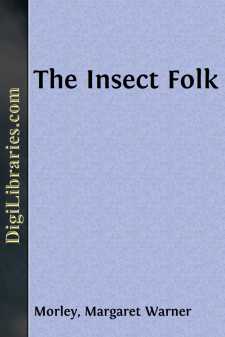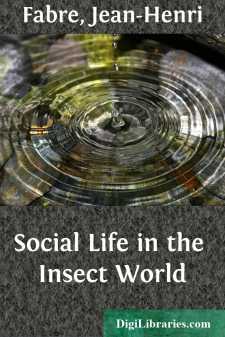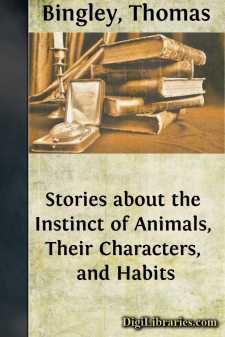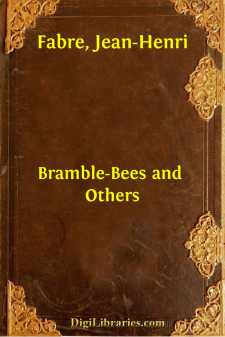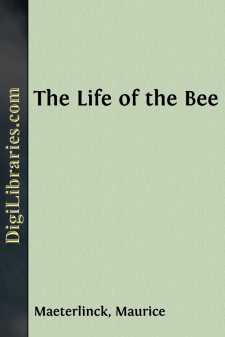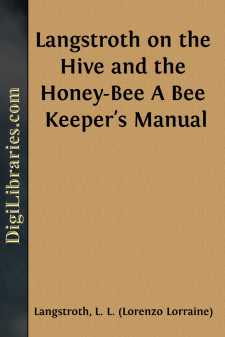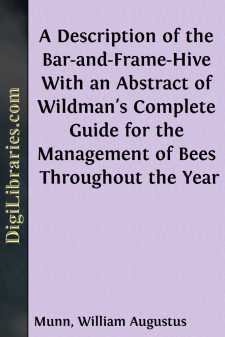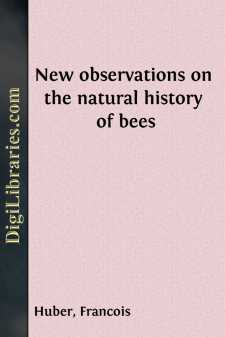Nature
- Animals 47
- Birds & Birdwatching 41
- Dinosaurs & Prehistoric Creatures 1
- Flowers 5
- General 32
- Horses 6
- Insects & Spiders
- Mammals 7
- Mushrooms 2
- Natural Disasters 6
- Natural Resources 3
- Reptiles & Amphibians 2
- Trees & Forests 10
Insects & Spiders Books
Sort by:
Our Pretty Dragon Flies Come, children; come with me. Come to a pond I know of. See how the water shines in the sun. Over there is an old log lying on the edge of the pond. It is covered with green moss, and a green frog is sitting on one end of it. Let us go and sit on the other end. Goop! he says, and—plump! he has jumped into the water. That is too bad, frog; we did not mean to disturb you. How...
more...
by:
Jean-Henri Fabre
CHAPTER I THE FABLE OF THE CIGALE AND THE ANT Fame is the daughter of Legend. In the world of creatures, as in the world of men, the story precedes and outlives history. There are many instances of the fact that if an insect attract our attention for this reason or that, it is given a place in those legends of the people whose last care is truth. For example, who is there that does not, at least by...
more...
by:
Thomas Bingley
CHAPTER IV. Uncle Thomas introduces to the Notice of the Young Folks the Ettrick Shepherd's Stories about Sheep; and tells them some Interesting Stories about the Goat, and its Peculiarities. "I dare say, Boys, you have not forgotten the Ettrick Shepherd's wonderful stories about his dogs. Some of those which he relates about sheep are equally remarkable, and as he tells them in the same...
more...
by:
Jean-Henri Fabre
CHAPTER 1. BRAMBLE-DWELLERS. The peasant, as he trims his hedge, whose riotous tangle threatens to encroach upon the road, cuts the trailing stems of the bramble a foot or two from the ground and leaves the root-stock, which soon dries up. These bramble-stumps, sheltered and protected by the thorny brushwood, are in great demand among a host of Hymenoptera who have families to settle. The stump, when...
more...
LET us now, in order to form a clearer conception of the bees' intellectual power, proceed to consider their methods of inter-communication. There can be no doubting that they understand each other; and indeed it were surely impossible for a republic so considerable, wherein the labours are so varied and so marvellously combined, to subsist amid the silence and spiritual isolation of so many...
more...
PREFACE. Before the reader decides that an apology is necessary for the introduction of another work on bees into the presence of those already before the public, it is hoped that he will have the patience to examine the contents of this. The writer of the following pages commenced beekeeping in 1828, without any knowledge of the business to assist him, save a few directions about hiving, smoking them...
more...
L. L. LANGSTROTH'S MOVABLE COMB HIVE.Patented October 5, 1862. Each comb in this hive is attached to a separate, movable frame, and in less than five minutes they may all be taken out, without cutting or injuring them, or at all enraging the bees. Weak stocks may be quickly strengthened by helping them to honey and maturing brood from stronger ones; queenless colonies may be rescued from certain...
more...
PREFACE Having been frequently requested to explain the use of the bar-and-frame-hive, in the management of bees, I have been induced to print the following pamphlet, to point out the advantages this new hive possesses over the common ones. I have added extracts from various authorities to show the importance of transporting bees for a change of pasturage, and thus prolonging the honey harvest....
more...
RULE I. ON THE CONSTRUCTION OF A BEE-HIVE. A bee-hive should be made of sound boards, free from shakes and cracks; it should also be planed smooth, inside and out, made in a workmanlike manner, and painted on its outside. REMARKS. That a bee-hive should be made perfect, so as to exclude light and air, is obvious from the fact, that the bees will finish what the workman has neglected, by plastering up...
more...
by:
Francois Huber
ON THE IMPREGNATION OF THE QUEEN BEE. SIR, When I had the honour at Genthod of giving you an account of my principal experiments on bees, you desired me to transmit a written detail, that you might consider them with greater attention. I hasten, therefore, to extract the following observations from my journal.—As nothing can be more flattering to me than the interest you take in my researches, permit...
more...


